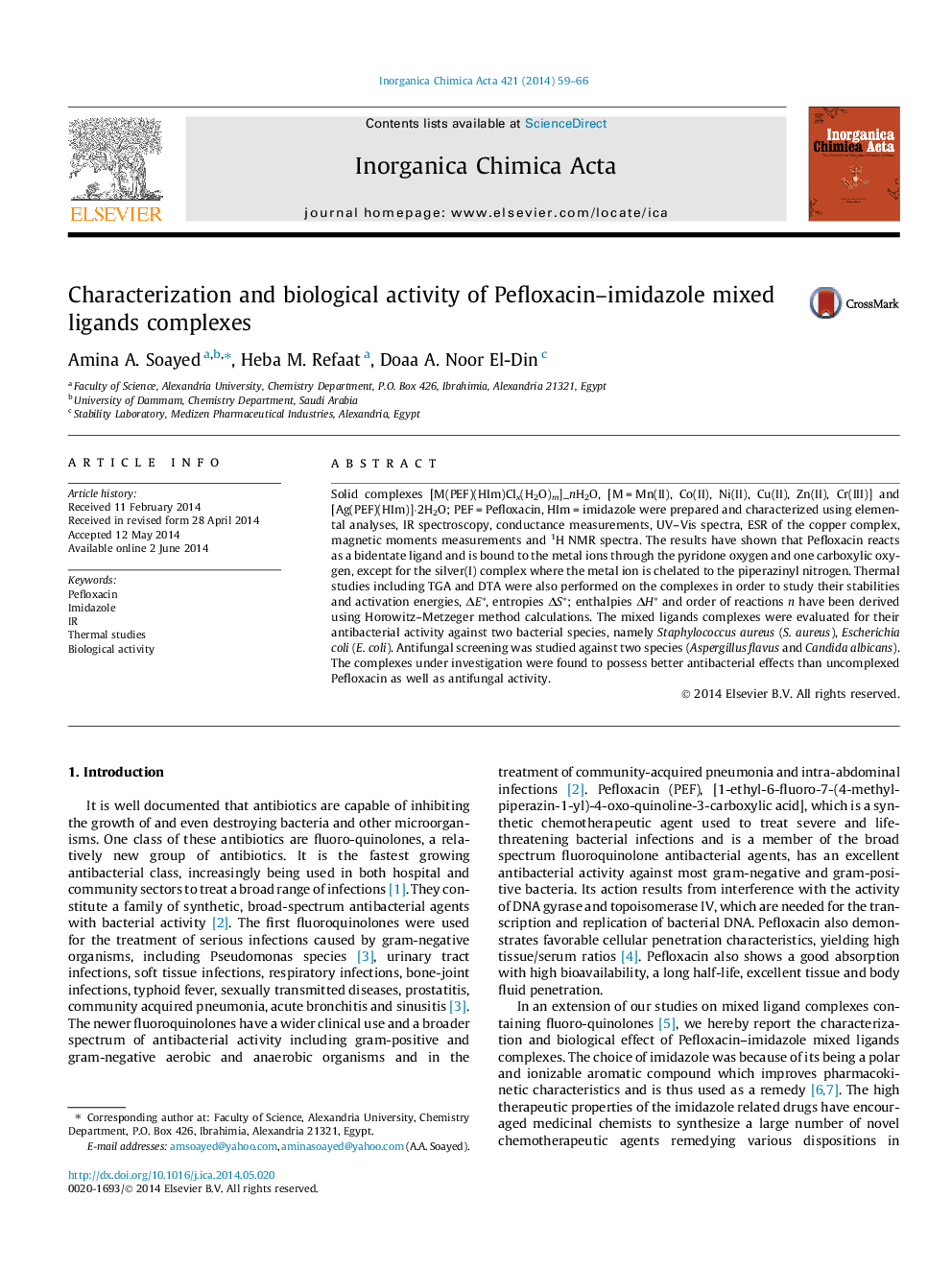| Article ID | Journal | Published Year | Pages | File Type |
|---|---|---|---|---|
| 1308093 | Inorganica Chimica Acta | 2014 | 8 Pages |
•Pefloxacin–imidazole mixed ligand complexes have been prepared.•The structures of the complexes were evaluated using spectroscopic methods.•Magnetic moment values were also measured.•Thermal analyses were done to test for the stability of complexes.•Biological studies showed them to have antibacterial and antifungal activity.
Solid complexes [M(PEF)(HIm)Clx(H2O)m]_nH2O, [M = Mn(II), Co(II), Ni(II), Cu(II), Zn(II), Cr(III)] and [Ag(PEF)(HIm)]·2H2O; PEF = Pefloxacin, HIm = imidazole were prepared and characterized using elemental analyses, IR spectroscopy, conductance measurements, UV–Vis spectra, ESR of the copper complex, magnetic moments measurements and 1H NMR spectra. The results have shown that Pefloxacin reacts as a bidentate ligand and is bound to the metal ions through the pyridone oxygen and one carboxylic oxygen, except for the silver(I) complex where the metal ion is chelated to the piperazinyl nitrogen. Thermal studies including TGA and DTA were also performed on the complexes in order to study their stabilities and activation energies, ΔE∗, entropies ΔS∗; enthalpies ΔH∗ and order of reactions n have been derived using Horowitz–Metzeger method calculations. The mixed ligands complexes were evaluated for their antibacterial activity against two bacterial species, namely Staphylococcus aureus (S. aureus), Escherichia coli (E. coli). Antifungal screening was studied against two species (Aspergillus flavus and Candida albicans). The complexes under investigation were found to possess better antibacterial effects than uncomplexed Pefloxacin as well as antifungal activity.
Graphical abstractPefloxacin + Imidazole + metal ion → [M (PEF)(HIm) Cl0·2H2O].Figure optionsDownload full-size imageDownload as PowerPoint slide
